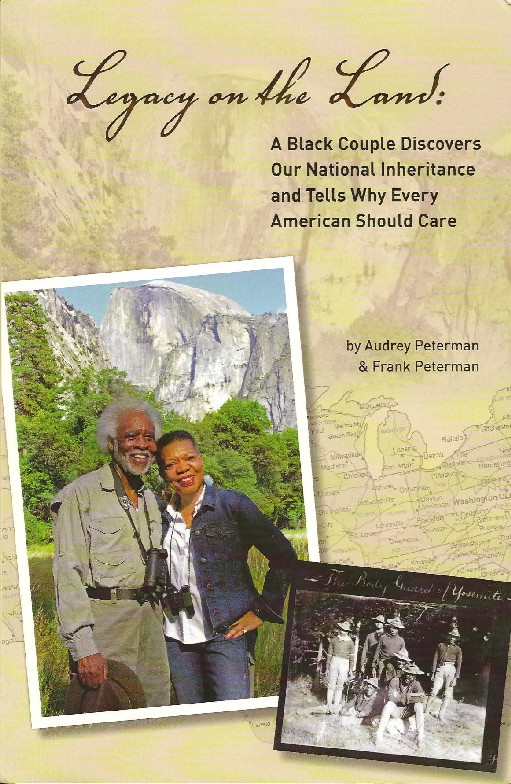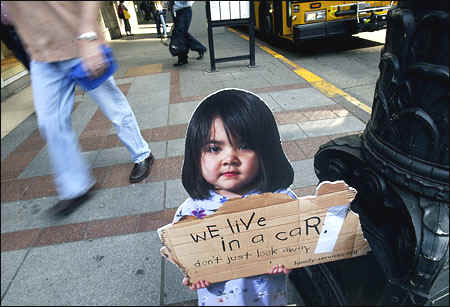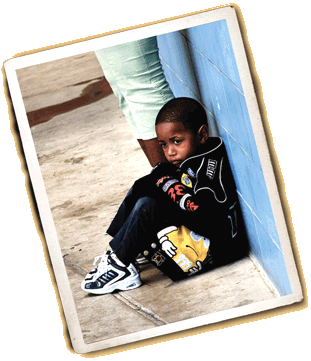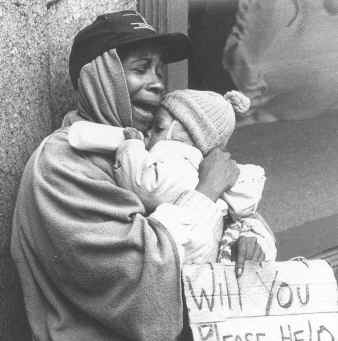In 1998, two friends, Frank and Audrey Peterman won the The Marjory Stoneman Douglas Award for Outstanding Citizen Advocacy on Behalf of the National Parks, 1998. Of course, I was proud of them and knew that they deserved this honor, after witnessing their hard work to bring African-Americans to the awareness of the splendor of our National Parks. But, in good consciousness, I had to ask Audrey if there would be as many homeless people in America, if the National Parks were accessible to everyone, like land was before the European colonialists arrived.
My contention was and still is that a great percentage of human beings are nomadic and the forests are where they would live, if they were not designated as National Parks.
Since I knew the Petermans had the ear of National Parks administrators, I suggested that they propose that several acres of the parks could be developed as free camping grounds and lodges to house those who would normally travel from site to site, similar to how Native Americans did six centuries ago. To my chagrin, Audrey skimmed over my idea and the discussion ended abruptly.
Now, 11 years later, I'm reading their newly published book, LEGACY ON THE LAND and truly enjoying Audrey's descriptive writing of the couples joyous romps through the Badlands and other vistas of our glorious country. Yet, homelessness is evident in higher numbers as thousands of American families are evicted from their apartments and foreclosed homes. Mothers and their children are living in their vehicles, while the National Parks stand in pristine and lavish splendor. There is definitely something immoral and downright wrong with this.
National Parks and National Park Trails
Welcome to our National Parks throughout the United States and Canada with a number of National Monuments, National Trails, National Lakeshores, and National Seashores, as well as some National Recreation Areas, National Wildlife Reserves, and various other designations. Experience easy day-hikes and backpacking trips, road and mountain bike rides, canoeing and kayaking trips, and camping information for our national parks. For the National Park you are looking for, go to the Trail Finder and browse by state or search by the park name. With over 46,000 trails we have something fun to do outdoors at almost every national park in North America.
Over 1 Million Children Homeless in U.S.
By Anne-Marie O'Connor
TIMES STAFF WRITER
Every night more than 1 million children in America face the dark with no place to call home. They are hungry, anxious and often exposed to violence. They shuttle between shelters and fall behind in school. (That is, where there are shelters with empty beds. WFI Editor) They are the vulnerable new face of the America homeless. Experts say that there are more homeless children in America than at any time since the Great Depression. About 40% of America's homeless are now women and their children - the fastest growing homeless group. (Women and children have been the fastest growing group of homeless for most of the 1990s. But when the Democrats won back the White House, it became less fashionable for the media to run news items on the homeless crisis. WFI Editor)
These are the conclusions of an unprecedented study unveiled Wednesday (30 June, 1999) that shows that this transient childhood on the mean streets of America is shortchanging children, robbing them of education, health and emotional stability. The study's report, presented Wednesday at a women's conference in Los Angeles, documents how children are being scarred by the kind of trauma that ravages survivors of war and natural disasters - condemning some to mental illness. "The face of homelessness in this country has changed dramatically," said Ellen Bassuk, an associate professor of psychiatry at Harvard Medical School and president of the Better Homes Fund, which produced the report, "Homeless Children: America's Newest Outcasts."
The fund is a national nonprofit group that uses research and fieldwork to recommend policies and programs to benefit the homeless. It derived its figures for the study from national homeless organizations, the U.S. Department of Education and the census. "Young children are without homes in the largest numbers since the Great Depression," said Bassuk. "We must act now to halt this epidemic before we lose another generation." (Apparently, Ms. Bassuk has already written off the last generation of homeless. WFI Editor) In the early 1980s, the number of homeless children was negligible, Bassuk said. Since then, divorce and the growth of female-headed families - about a third of which live in poverty - have conspired to turn growing numbers of women with children into the streets, even as the nation enjoys one of the longest sustained economic booms in history.
SOURCE: Excerpted from the 1 July, 1999, issue of the Los Angeles Times, Orange County Edition, from an article entitled, "Ranks of Homeless Children in the U.S. Is on the Rise, Study Finds." Reprinted in the public service of the national interest of the American people.
(WFI EDITOR: The homeless crisis is not only a source of national shame for the richest country in the world, especially since the Federal Government has properties across the country that reverted to its possession upon the fall of the savings and loan industry, which it has never really put to the use of resolving this crisis; it is also a crisis that threatens the public safety of every American citizen who is not homeless, to say nothing of the safety of property. Homeless people have nothing to lose, and the very experience of homelessness is one of feeling abandoned and rejected. The forces that are exerted on homeless people, both by government and the citizenry, and even the non-profits that are supposed to be addressing their problems, all work to the effect of reducing the self-esteem of those individuals who become homeless, ultimately putting the great majority of them at risk of developing mental illness and drug addiction.
The end result are people who are reduced to the level of animals determined to survive, who will resort to desperate means such as crimes which cross the thin veneer of what it means to be civilized. The bottom line is that this is something that could be avoided, if local, state and the national governments all recognized the crisis at hand, and took it seriously enough to handle it. There is more than enough money to build new sports stadiums, and new freeways, and new offices for government bureaucracies. There should be money for SOLVING the homeless crisis, especially since the real cost, in terms of money, is virtually pennies a day. The next time some local atrocity is attributed to "transients," just remember that it could have been avoided, if the leaders of the community would do their job, and lead.)
Gotham Gazette - November 2, 2009
New Efforts Fail to Reduce Homelessness by Jillian Jonas
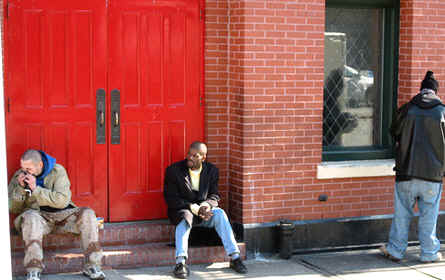
Photo (cc) MightyBoyBrian - Men wait for a hot meal at the Bowery Mission
As Mayor Michael Bloomberg approached the end of his first term in 2004 with his eye toward re-election in 2005, the administration was able to momentarily turn away from the city’s economic turmoil. Bloomberg began re-examining some of New York’s social service policies, putting fighting poverty and homelessness at the top of his list.
In June 2004, Bloomberg announced an ambitious five-year plan called "Uniting for Solutions Beyond Shelter" with the goal of tackling the complex questions of homelessness -- particularly ending chronic homelessness within 10 years -- and cutting the homeless population by two-thirds. "At its heart, this new plan aims to replace the city's over-reliance on shelter with innovative, cost-effective interventions that solve homelessness -- and to make visible headway in reducing homelessness on the streets and in shelters," said the mayor.
To be sure, there have been bumps along the way: controversial moves offering homeless individuals one-way tickets out-of-town or enforcing a never utilized Pataki-era state law charging homeless families for their shelter stay. There also was an extremely unpopular attempt to move a Manhattan intake shelter to Brooklyn. And, at a recent Working Families Party mayoral forum, media reports quoted Bloomberg as saying New York's homeless find shelters "a lot more attractive" than "permanent living situations."
But more significantly, Bloomberg’s lofty goals have not materialized. In fact, rather than cutting the population by two-thirds, the administration has seen homelessness increase substantially.
A Rising Population
According to the Coalition for the Homeless, the city's homeless shelter population has increased by 65 percent between 1998 to April 2007. Earlier this month, the coalition released revised numbers revealing the homeless shelter population reached its highest level ever at the end of September 2009. It reported "39,000 homeless New Yorkers -- including 10,000 homeless families, an all time high -- sleep in municipal shelters every night." It also found since Bloomberg took office, 45 percent more New Yorkers are in shelters every night.
These updated numbers detailed that in August "an all-time record 1,914 new homeless families entered the shelter system, and the past year has seen the largest number of new homeless families entering shelters since modern homelessness began."
Moreover, the coalition found the number of homeless New Yorkers sleeping in city shelters in fiscal year 2009 was "10 percent higher than the previous fiscal year, and 45 percent higher than fiscal year 2002, when Mayor Bloomberg took office." This data includes more than 16,500 children sleeping in shelters, a 12 percent increase since last year.
The city sees some successes in its fight to end homelessness. In its recently released Mayor's Management Report, it noted that the number of single adults in a shelter on an average day has dropped from 8,474 in 2005 to 6,526 in fiscal year 2009 and attributed some of the drop to shorter shelter stays.
The city also says it has kept many people from becoming homeless stating, "More than 90 percent of families and adults receiving prevention services did not enter the [Department of Homeless Services] shelter system." However, even by the administration's own figures, the average number of families with children in shelters has increased steadily since fiscal year 2006. In fiscal 2009, 12,959 families with children entered the shelter system, a 61 percent rise from 2005.
But its homeless policies continue to attract criticism. Chastising the mayor for thinking some people "would choose to live in a homeless shelter over permanent housing," Public Advocate Betsy Gotbaum said in a statement, "Because the administration doesn’t understand the problems facing homeless New Yorkers, its policies fail to present real solutions. Policies should be reevaluated to respond to the worsening economy, the scarcity of jobs and affordable housing, and the reality that recent strategies have not been working."
The City's Tactics
In its effort to fight homelessness, the administration adopted what its Web site describes as "a first-ever effort to bring together the public, nonprofit, and business sectors in a coordinated campaign to address homelessness."
The plan was multi-faceted and integrated a myriad of city agencies. It has included an expansion of community-based homelessness prevention programs, a centralized database to better track the homeless, and ways to redirect funding and priority into prevention and away from the shelter system. It set stricter eligibility requirements, a redesigned intake process, shorter shelter stays and the creation of more supportive housing.
Deputy Mayor Linda Gibbs, former commissioner for the Department of Homeless Services and one of the advisors who helped create the new approach, said what was really innovative was that the city "flipped the paradigm." Traditionally, once someone enters "a shelter, your [other] needs are met, and then we figure out housing." Now, Gibbs said, the priority is being placed on housing needs, followed by other support services.
Patrick Markee, senior policy analyst with the coalition, though, said the administration has made mistakes from the start. While the faltering economy accounts for some of the increase in homelessness, Markee also attributes the surge to a 2005 decision by city officials to stop giving homeless families priority for federal Section 8 housing vouchers and apartments in public housing.
"From the days of Mayor Ed Koch," Markee said, "the neediest have always received a portion" of these programs. Now, non-homeless poor families receive all the priority. "It's not that they are undeserving of housing [assistance] -- there's now just anti-homeless discrimination," Markee said.
Gibbs said the administration made this shift because the supply of vouchers and public housing "is insufficient to meet the demand from the shelter system," and so it opted to give preference to "disadvantaged lower-income people." To deal with homelessness, she said, the city decided to focus "on preventive [programs] versus re-housing."
Changing Programs
In 2005, the city introduced a housing assistance plan called Housing Stability Plus, which was authorized by New York State. Gibbs said in a recent interview that the plan was "not as attractive as Section 8, where the voucher is less time-limited," but there was a shortage of Section 8 vouchers during the Bush administration when housing assistance was perennially on the chopping block.
"Housing Stability Plus," Gibbs said, "was tied to the case of a family and to receiving money and welfare... and freed up Section 8 for other community needs." Housing aid for a family decreased in value by 20 percent each year and assistance ran out after five years.
The program was "initially successful” according to Gibbs. However, the administration abandoned it two and a half years later because, Markee said, it was "a failure…and deeply flawed." The city replaced it in 2007 with Advantage New York/Work Advantage, a rent-subsidy program for homeless families that required them to work at least 20 hours a week.
Robert Hess, commissioner of Homeless Services described it in an email as, "the most generous municipal rental assistance program in the nation." According to Hess, over 13,000 leases for permanent housing have been signed under the program. "Each week 131 families sign Advantage leases, an increase of 52 percent over Housing Stability Plus levels and 79 percent over Section 8,” he said. This subsidy lasts for only two years.
Both Gibbs and Hess described how Advantage New York "incentivizes" participants, to create savings accounts and to work. The city matches dollar-for-dollar up to $250 a month in a bank account to strengthen "asset development strategy, banking skills and rewards for savings." Gibbs also said the plan gets beneficiaries "in the habit of contact with a landlord." In addition, Hess said, the program "enhances landlord participation and creates options to serve a broader population. Most importantly, it focuses on quickly returning families to their communities.”
Markee, though, disputes the administration's claims of success. What is especially galling, he said, is that there is no evidence that time-limited rent subsidies are effective, but the administration continues to use them to replace other, proven programs. The city, he charged, wants change for the sake of change. It is, he said, preoccupied with the "fetish of the new."
Markee also expressed concerns over the short time limit, noting that work advantage vouchers are expiring this year for approximately 2,000 formerly homeless families. The city "has never addressed" what will happen to these people, Markee said.
Homeless Services also invested in HomeBase, a homeless prevention pilot program that has since gone citywide. Its budget increased by 22 percent in fiscal year 2010; its client service levels increased by more than 10 percent in the first quarter of fiscal year 2010; and funding for anti-eviction services was raised by 16 percent, all according to an agency spokesperson.
The administration should not take the credit for that, though, Markee said. In an email, he wrote, "Bloomberg and City Council adopted a budget cut of $150,000 from the homelessness prevention fund," for fiscal year 2009. Bloomberg, he said, "also proposed major cutbacks to eviction prevention legal services," but the City Council restored those.
For fiscal year 2010, which began in July, Bloomberg initially called for a cut of $5 million for HomeBase prevention offices, according to Markee, but federal stimulus money then provided approximately $74 million for homelessness prevention in New York City over three years.
No Room at the Shelter?
As the cold weather approaches, capacity at shelters has also raised red flags. Another Coalition for the Homeless report claimed the city has virtually run out of space, especially for homeless single adults. It noted, "the number of homeless single adults... this year has increased by more than 7 percent -- the largest one-year increase since the 2001 economic recession." The coalition discovered on the night of Sept. 30 only two available shelter beds for homeless men and eight for women.
Gibbs described this as normal: “Capacity is always at 99 percent… and the single numbers always go up in winter; [These are] tried and true projections.”
Bloomberg pledged to construct about 12,000 units of supportive housing across the city. These would address the needs of various people, including substance abusers and domestic violence victims, Gibbs said.
Many units are currently in the works. There is "a major dent made to move the chronically homeless" from the streets and shelters, in part by learning more about, as Gibbs put it, "the who, where, their history … tracking [and] understanding their needs."
However, the coalition said, supply continues to lag behind demand. "More than half of the newly-constructed supportive housing -- 3,276 units of the planned 6,250 new units -- will not be built until at least 2011," a coalition report said. That’s a different timeline than the one set out by Bloomberg, which applies until 2016.
Hess, though, said the city is prepared for future demand. "We function somewhat like an accordion, expanding and contracting as needed, so that our system does not keep space open unnecessarily at the taxpayers' expense and minimizes impact on communities, while at the same time, being ready at any moment to meet need," he wrote in a email.
Underlying all the specifics for many homeless advocates lies a question of philosophy. "One of the major reasons the Bloomberg administration gave for changing the old system of giving homeless families preference for some housing program was that it acted as a perverse incentive for families to go into the shelter system. Even without the priorities, family homelessness has escalated, suggesting either that the homelessness is driven by housing market and economic pressures pushing families out, not by perverse incentives. The priorities should be restored,” said Victor Bach, director of housing research at the Community Service Society.
With an eye on those economic pressures, Brooklyn College sociology professor Alex Vitale said in an email that the city needs to "step up and reinsert itself into housing markets through new construction of affordable housing... The amount we spend to [house] homeless families in the emergency system... is a misuse of resources that could be put into permanent affordable housing if government would embrace the reality of the current market failure and quit trying to work with for-profit landlords and developers.”
The administration often points to its record of creating new housing. Whatever its successes, though, more demand clearly exists, leaving some New Yorkers with no place to live.
Jillian Jonas is a freelance journalist focusing on local and national politics, government and public policy. She is a former national political analyst for U.P.I.
Gotham Gazette - http://www.gothamgazette.com/article/housing/20091102/10/3079

About the Authors: Pioneers in the conservation and green movement since 1995, Audrey and Frank Peterman are among the leading experts on America’s publicly-owned lands system. They advocate for the integration of these natural treasures as a means to appreciate our collective history and achieve a truly democratic society.
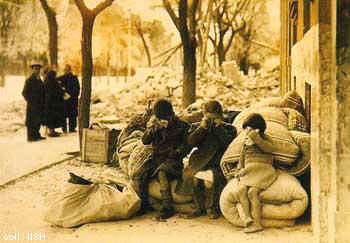
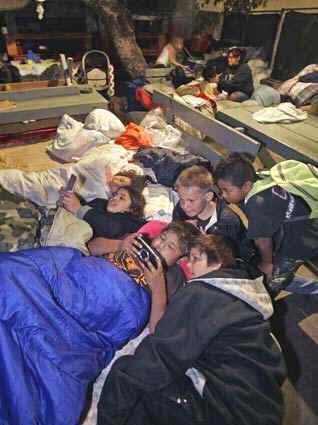
The Shame of the Nation
A report called "America's Young Outcasts," issued by the National Center on Family Homelessness, shines much-needed light on an age-old problem in the United States: the shame of homeless children across the country. Surveying the years 2005-2006, the report found that child homelessness is worse now that at any point since the Great Depression.

This is one in a series, to run between now and Election Day, examining Mayor Michael Bloomberg's record in key areas. For more on the mayor's eight years see:
Patron of the Arts: Even in the face of the faltering economy Mayor Michael Bloomberg has taken steps to insure New York's cultural institutions survive and thrive.
Steps Toward Sustainability: The announcement of Plan NYC 2030 in 2007 heralded a new emphasis by the Bloomberg administration on reducing pollution and confronting climate change
The MetroCard Mayor?: Michael Bloomberg has made major steps to improve transportation in the city -- except when it comes to the subway system.
Confronting the Challenges of Boom and Bust: James Parrott looks at the last eight years and finds that, despite the mayor's huge success as an innovative businessman, his management of New York City's economic fortunes has been pretty conventional.
Governing a City of Newcomers: Always a supporter of immigrants, Michael Bloomberg during the election season, has announced more initiatives to aid the foreign born -- and advocates will be watching to make sure these go beyond campaign promises.
Redefining Poverty -- Then What?: Michael Bloomberg won widespread praise for his push to change the way governments measure poverty. Reactions to what he has done after are less effusive.
Bloomberg's Green Empire: Recognizing the importance of parks, the mayor has expanded and improved New York's open space -- but critics wish he had consulted more with communities along the way.
Bloomberg as Budget Master: Reflecting a changing economy, the mayor's fiscal policies have changed while the city has gone from bust to boom and back again.
Businessman, Billionaire, Reformer?: Michael Bloomberg's handling of issues involving elections and governance raises the question: Is he above politics or a politician whose wealth lets him play the game in a different way?
The Health Mayor? While the administration has garnered attention for restricting smoking and trying to get New Yorkers to eat well, its actions on health policy go far beyond that.
Bloomberg and the Police: Crime has hit new lows under Mayor Michael Bloomberg, but experts wonder if he deserves the credit and some critics charge that new police practices infringe on the rights of New Yorkers.
A Calmer, Yet Still Segregated City: In eight years in office, Bloomberg has quieted the racially charged atmosphere of the Giuliani years but done little to address housing disparities and other divisions that remain.
Affordable Housing Not Included: A key part of the mayor's plan to provide moderately priced housing has collided with the collapse in real estate.
The 63rd Senator: The mayor won the school control battle and some funding fights too. Has he finally figured out how to get his way in the state capitol?
Reshaping the City: Who's Being Heard -- and Why? To meet the post-industrial age, the Bloomberg administration has rezoned one sixth of New York's land.


